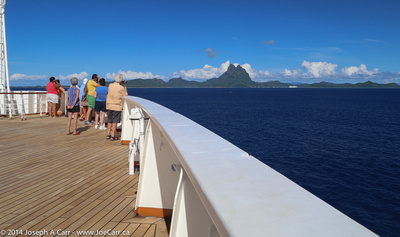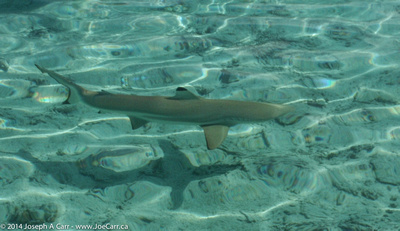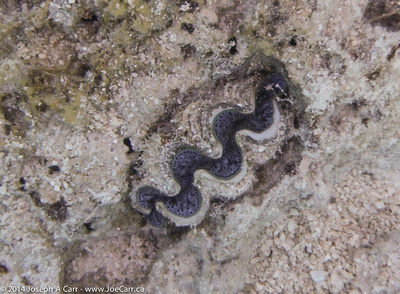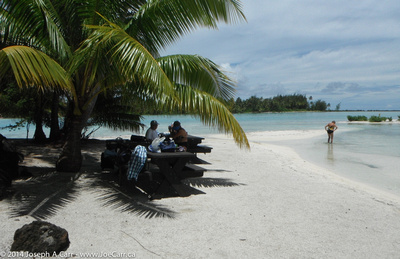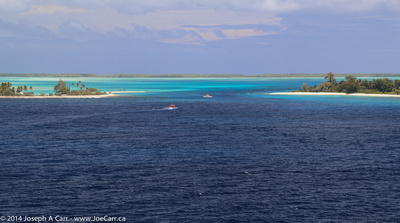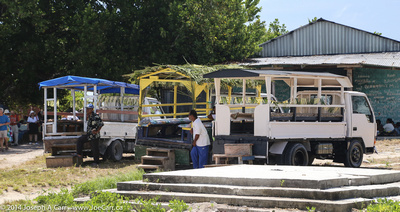2014 Hawai’i-French Polynesia cruise
March 3, 2014 – Monday – Bora Bora, French Polynesia
I have some breakfast in the Lido early, since I have to be ashore for my excursion by 9AM. Another cruise ship has anchored beside us, replacing the one I saw yesterday. Bora Bora is obviously a popular port-of-call! After breakfast, I take the 10 minute tender ride ashore, and eventually we are collected and board our catamaran. We actually depart a bit early since everyone is present from the ship. Moana Adventure Tours runs this excursion with four Tahitian guys. They are well-rated on TripAdvisor and I can see why – I had a great day, as did the others from the ship on this excursion!
First stop on the tour is just around the seaward side of the closest motu (islet) to Vaitape harbour, so we arrive there in only 15 minutes. We see Stingrays and Black-tipped sharks in the shallow water. Most of the people get into the water with them, however I stay aboard and get some great photos and video from the deck.
Next stop is about 20 minutes away: a small, private motu where there are coral reefs and a nice sandy beach. It is a wet landing, so everyone gets in the water here. I have a wonderful hour poking around, taking photos and video of the fish and the coral formations in the shallow lagoon. The excursion guys serve snacks and drinks under the shade of the palm trees before we return to the catamaran for the trip back to Vaitape harbour. This 3.5 hour excursion couldn’t be much better, but I’m very glad to head back to the ship’s air conditioning, since the oppressive heat hits us once we are back in the town of Vaitape.





